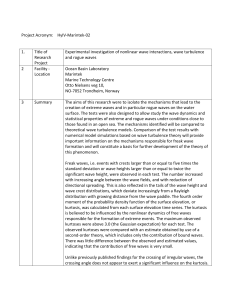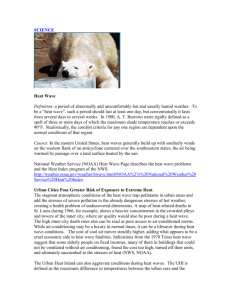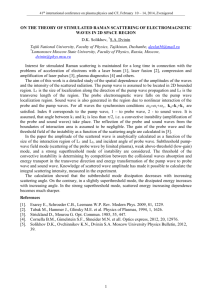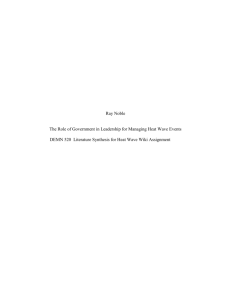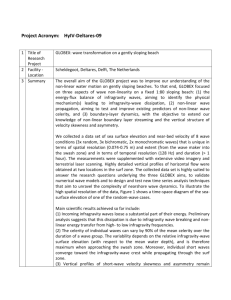(History of public health - 755.26 KB)
advertisement
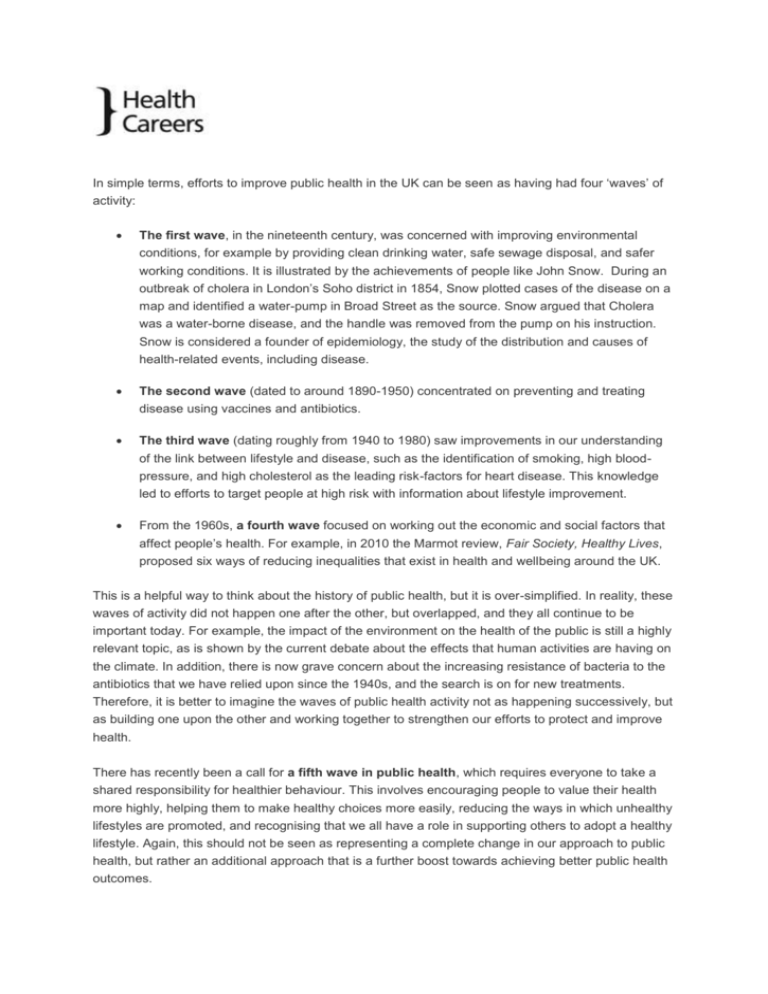
In simple terms, efforts to improve public health in the UK can be seen as having had four ‘waves’ of activity: The first wave, in the nineteenth century, was concerned with improving environmental conditions, for example by providing clean drinking water, safe sewage disposal, and safer working conditions. It is illustrated by the achievements of people like John Snow. During an outbreak of cholera in London’s Soho district in 1854, Snow plotted cases of the disease on a map and identified a water-pump in Broad Street as the source. Snow argued that Cholera was a water-borne disease, and the handle was removed from the pump on his instruction. Snow is considered a founder of epidemiology, the study of the distribution and causes of health-related events, including disease. The second wave (dated to around 1890-1950) concentrated on preventing and treating disease using vaccines and antibiotics. The third wave (dating roughly from 1940 to 1980) saw improvements in our understanding of the link between lifestyle and disease, such as the identification of smoking, high bloodpressure, and high cholesterol as the leading risk-factors for heart disease. This knowledge led to efforts to target people at high risk with information about lifestyle improvement. From the 1960s, a fourth wave focused on working out the economic and social factors that affect people’s health. For example, in 2010 the Marmot review, Fair Society, Healthy Lives, proposed six ways of reducing inequalities that exist in health and wellbeing around the UK. This is a helpful way to think about the history of public health, but it is over-simplified. In reality, these waves of activity did not happen one after the other, but overlapped, and they all continue to be important today. For example, the impact of the environment on the health of the public is still a highly relevant topic, as is shown by the current debate about the effects that human activities are having on the climate. In addition, there is now grave concern about the increasing resistance of bacteria to the antibiotics that we have relied upon since the 1940s, and the search is on for new treatments. Therefore, it is better to imagine the waves of public health activity not as happening successively, but as building one upon the other and working together to strengthen our efforts to protect and improve health. There has recently been a call for a fifth wave in public health, which requires everyone to take a shared responsibility for healthier behaviour. This involves encouraging people to value their health more highly, helping them to make healthy choices more easily, reducing the ways in which unhealthy lifestyles are promoted, and recognising that we all have a role in supporting others to adopt a healthy lifestyle. Again, this should not be seen as representing a complete change in our approach to public health, but rather an additional approach that is a further boost towards achieving better public health outcomes.









